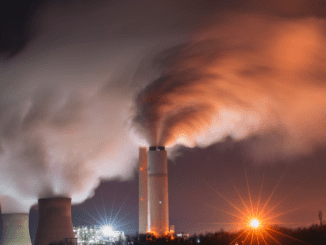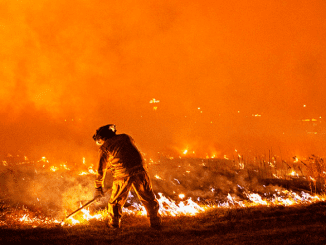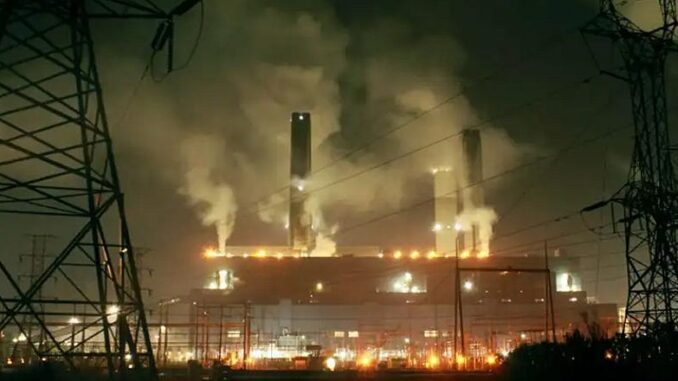
WASHINGTON, DC, September 17, 2025 (ENS) – The reporting of industrial greenhouse gas emissions to the U.S. Environmental Protection Agency, a complex system that serves both national and international reporting requirements to mitigate climate change, is being dismantled by the Trump administration.
“Human activity is now leading to the equivalent of 40 billion tons of carbon dioxide, CO2, emitted into the atmosphere each year, putting us on track to increase the planet’s temperature by 1.5 degrees Celsius over pre-industrial levels by 2040,” stated the Lawrence Berkeley National Laboratory in 2021.
According to the Intergovernmental Panel on Climate Change, the world must limit global warming to 1.5 degrees Celsius to avoid the most dangerous impacts of climate change.
But the United States is moving in the opposite direction under President Donald Trump.
To comply with President Trump’s executive order on Day One of his second term, the U.S. Environmental Protection Agency Administrator Lee Zeldin this week proposed a rule to end what he called “the burdensome Greenhouse Gas Reporting Program.”

Zeldin says the move will save American businesses up to $2.4 billion in regulatory costs while maintaining the agency’s legal obligations under the Clean Air Act.
The Greenhouse Gas Reporting Program was created in 2008 to provide a comprehensive summary of U.S. greenhouse gas emissions. If finalized, the EPA’s proposal would remove reporting obligations for most large facilities, all fuel and industrial gas suppliers, and carbon dioxide, CO2, injection sites.
Unlike other mandatory information collections under the Clean Air Act, the Greenhouse Gas Reporting Program is not directly related to a regulation and has no material impact on improving human health and the environment, Zeldin says.
“Alongside President Trump, EPA continues to live up to the promise of unleashing energy dominance that powers the American Dream. The Greenhouse Gas Reporting Program is nothing more than bureaucratic red tape that does nothing to improve air quality,” said Zeldin. “Instead, it costs American businesses and manufacturing billions of dollars, driving up the cost of living, jeopardizing our nation’s prosperity and hurting American communities.”
“By reducing the overall regulatory burden, current regulated parties will be able to focus compliance expenditures on actual, tangible environmental benefits. As the agency continues to Power the Great American Comeback, this proposal represents a significant step toward streamlining operations, cutting unnecessary red tape, unleashing American energy, and advancing EPA’s core mission of protecting human health and the environment,” Zeldin claimed, announcing the proposal on Friday.
The Greenhouse Gas Reporting Program now covers roughly 8,000 sources. In the oil and gas industry, covered facilities include upstream production, gathering and boosting as well as transmission assets, refineries, petrochemicals facilities, and CO2 reinjection wells. Onshore oil and gas producers must report emissions of carbon dioxide, methane, and nitrous oxide.
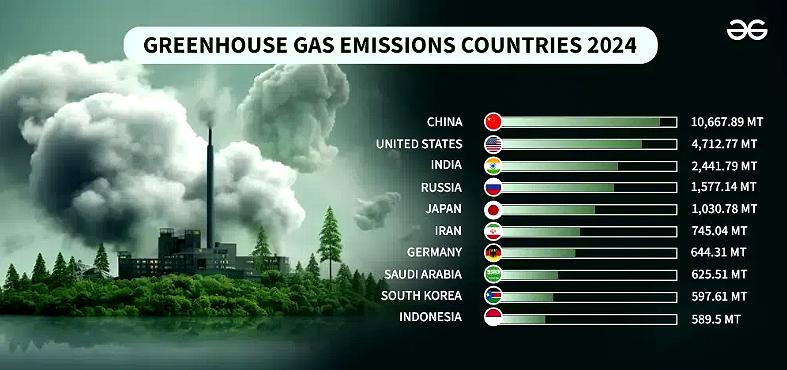
“The U.S. greenhouse gas inventory has served as the model for other countries to tally greenhouse gases across their economies. In fact, it is the basis for reporting of greenhouse gases under the UN Framework Convention on Climate Change, the parent treaty for the Paris Agreement,” Ben Cahill, director for Energy Markets and Policy at the Center for Energy and Environmental Systems Analysis, University of Texas at Austin, said.
NGOs Mount Legal Challenge
Environmental groups, including the three-million member Environmental Defense Fund, EDF, have filed or indicated plans to file lawsuits to block removal of greenhouse gas reporting in the United States.
The environmental organizations argue that the EPA’s removal of the reporting program is unlawful and harms the public interest by eliminating a vital source of data on climate pollution.
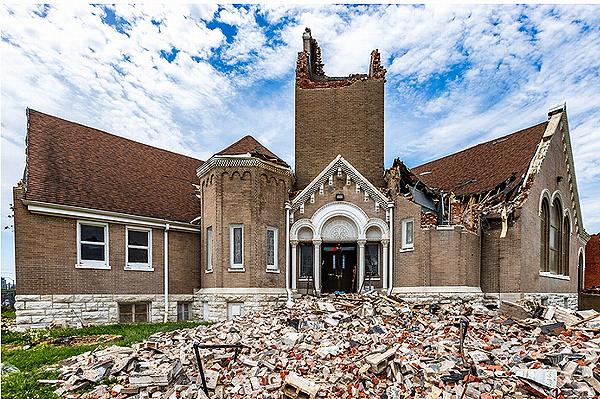
“People across the country are suffering because of climate change and the more powerful storms, more extreme heat waves, more frequent fires, and other disasters it brings. EPA’s Reporting Program provides communities with vital information to address the pollution that causes those dangers and to advocate for limits on it,” said EDF senior attorney Edwin LaMair. “Administrator Zeldin’s attempt to delay and undermine this important program is unlawful.”
“EPA’s Greenhouse Gas Reporting Program is a fundamental part of U.S. climate policy. Data gathered under the program, as required by Congress, is publicly available and is used by a wide variety of state and local governments, businesses, communities, and organizations. The data helps policy makers and the public better understand the pollution that causes climate change and allows them to make better decisions to address that pollution,” LaMair explains.
“Eliminating information about pollution will not make the problem of climate change go away, it will only make it more expensive and difficult to deal with,” the EDF attorney said.
The EDF previously sued the EPA in March 2025 over an earlier delay of the reporting deadline, arguing that the EPA acted unlawfully by shutting down the reporting portal and extending the deadline without public notice.
The Trump administration also refused to release this year’s U.S. Greenhouse Gas Inventory – an annual accounting of pollution that uses Greenhouse Gas Reporting Program data. EDF got those documents through the Freedom of Information Act and made them publicly available on its website.
“EPA has reliably released the U.S. Greenhouse Gas Inventory over the past three decades, under Presidential administrations of both parties,” said Erin Murphy, EDF Director and Senior Attorney. “The Trump administration’s decision to withhold this vital information left people in the dark about the sources of pollution while they’re experiencing the harms of a changing climate. Fortunately, public access to these important documents has now been restored.”
Find the 2025 U.S. Greenhouse Gas Inventory here.
The Greenhouse Gas Reporting Program requires 47 source categories, covering over 8,000 facilities and suppliers in the United States to calculate and submit their greenhouse gas emissions reporting annually.
In this action, EPA is proposing to permanently remove the following source categories from reporting requirements, along with dozens of others:
- Stationary Fuel Combustion Sources
- Electricity Generation
- Adipic Acid Production
- Aluminum Production
- Ammonia Manufacturing
- Cement Production
- Electronics Manufacturing
- Ferroalloy Production
- Fluorinated Gas Production
- Glass Production
- Hydrogen Production
- Iron and Steel Production
- Lead Production
- Lime Manufacturing
- Magnesium Production
- Nitric Acid Production
- Petroleum and Natural Gas Systems
- Petrochemical Production
- Petroleum Refineries
- Pulp and Paper Manufacturing
- Underground Coal Mines
Following a review of the reporting program, EPA said “there is no requirement under the Clean Air Act section 114a to collect greenhouse gas emission information from businesses nor is continuing the ongoing costly data collection useful to fulfill any of the agency’s statutory obligations.”
International Obligations Still Apply
But the new Trump administration position on greenhouse gas emissions reporting contradicts U.S. obligations under the United Nations Framework Convention on Climate Change, UNFCCC.
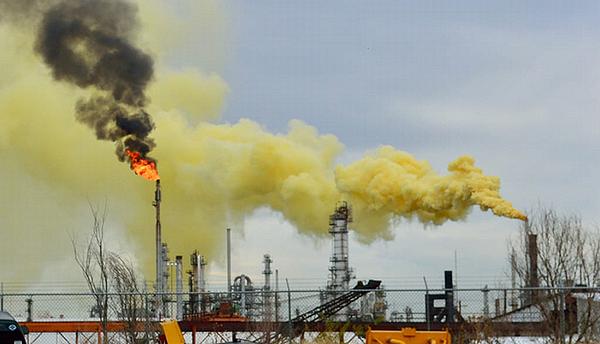
On his first day in office, January 20, 2025, President Trump signed an executive order to begin the process of withdrawing from the Paris Agreement. The withdrawal is set to take effect in January 2026, one year after the official notification to the United Nations. This is the second time the United States has initiated a withdrawal, the first being during Trump’s initial term.
But Trump’s 2025 executive order did not withdraw the United States from the broader 1992 UNFCCC treaty, which provides the framework for international climate negotiations. A withdrawal from the UNFCCC would require the consent of the Senate, which ratified the treaty decades ago.
By remaining a party to the UNFCCC, the United States retains its ability to participate in climate negotiations and meetings of the Conference of the Parties, though its influence is weakened by its withdrawal from the Paris Agreement. The United States also remains obligated to its reporting requirements under the UNFCCC.
Even so, EPA is proposing now to remove all greenhouse gas reporting requirements, except for those subject to the Waste Emissions Charge. Clean Air Act section 136 only requires data collection for segments of subpart W petroleum and natural gas systems subject to the Waste Emissions Charge.
Greenhouse Gas Reporting Timeline
- The initial Greenhouse Gas Reporting Rule was mandated by Congress in the Fiscal Year 2008 Consolidated Appropriations Act and was promulgated under section 114 of the Clean Air Act. Congress authorized funding for the creation of the Greenhouse Gas Reporting Program in the Fiscal Year 2008 Consolidated Appropriations Act.
- The Obama EPA promulgated the program and began collecting data in 2010. The Greenhouse Gas Reporting Program currently requires reporting of greenhouse gas data from certain large greenhouse gas emission sources, fuel and industrial gas suppliers, and CO2 injection sites.
- The Greenhouse Gas Reporting Program requires reporting of greenhouse gas data from large sources and suppliers across a range of industry sectors. The Greenhouse Gas Reporting Program collects greenhouse gas data from 47 source categories and currently has several years of data from these sources, including reports from more than 8,000 direct emitters and suppliers of greenhouse gases.
- In 2022, Clean Air Act section 136 required EPA to impose and collect the Waste Emissions Charge on methane emissions beginning with calendar year 2024 emission data from facilities in all segments of the petroleum and natural gas systems sector reported under subpart W except from the natural gas distribution industry segment.
- On November 18, 2024, the Biden EPA issued the final Waste Emissions Charge rule to implement the 2022 Inflation Reduction Act’s methane tax provisions. Congress amended the Clean Air Act by adding section 136, “Methane Emissions and Waste Reduction Incentive Program for Petroleum and Natural Gas Systems.” Clean Air Act section 136 required EPA to impose and collect a waste emission charge on methane emissions that exceeded specified thresholds from applicable facilities that reported more than 25,000 metric tons of carbon dioxide equivalent of greenhouse gass under the petroleum and natural gas systems subpart W source category.
- On March 12, 2025, Administrator Zeldin announced that the agency was reconsidering the Greenhouse Gas Reporting Program.
- On March 14, 2025, President Trump signed a joint resolution of disapproval under the Congressional Review Act, disapproving the November 2024 final Waste Emissions Charge rule.
- On July 4, 2025, President Trump signed the One Big Beautiful Bill Act which amended Clean Air Act section 136g to revise the period under which the Waste Emissions Charge is imposed and collected to begin with emissions reported for calendar year 2034 and later. In accordance with this new law, EPA will not be collecting subpart W data on petroleum and natural gas systems until 2034.
If finalized as proposed, no industries would need to submit reports with 2025 data. However, EPA is proposing to extend the March 31, 2026, reporting deadline until June 10, 2026. This extension, if
finalized before March 31, 2026, would allow EPA time to issue a final rule prior to the regulatory deadline for reporting year 2025.
EPA will initiate a public comment period to solicit input. Further information on the public comment process and instructions for participation will be published in the Federal Register and on the EPA website.
For more information on the proposed rule and how to comment, please see EPA’s fact sheet here.
Trump Administration Removes Critical Online Climate Data
The National Climate Assessment is an initiative within the U.S. federal government focused on climate change science, formed under the auspices of the Global Change Research Act of 1990. In writing its assessment, the U.S. Global Change Research Program coordinates a team of experts and receives input from a Federal Advisory Committee.
Congress requires the federal government to publish the National Climate Assessment every four years. The first National Climate Assessment was published in 2000. Since then, four additional reports have been published, with the fifth report published in 2023. This last report emphasized the degree to which climate change is expensive, deadly and preventable.
Work on the assessment halted in 2025 when funding was eliminated during the second Trump administration. The scientists and experts who had been compiling the report were dismissed as the scope of the report was being re-evaluated. On June 30, 2025, the government website hosting access to all past National Climate Assessment Reports was taken down.
The National Climate Assessment had been used widely used by teachers, city planners, farmers, judges and regular citizens looking for answers to questions such as how quickly sea levels are rising near American cities and how to deal with wildfire smoke exposure. The most recent edition had a searchable atlas that allowed anyone to learn about the current and future effects of global warming in their specific town or state.
“If you are a human being in the United States, your life is already being impacted by climate change whether you know it or not,” Katharine Hayhoe, a climate scientist who was one of the authors of the assessment, said.
“If we don’t recognize that, it’s simply because we haven’t connected the dots. And the National Climate Assessment was one of the primary tools connecting those dots.”
The next edition was supposed to be released in 2027, and about 400 volunteer authors had started working on it. That work stopped after all the federal staff who coordinate it were let go in April.
The lawsuits over the Greenhouse Gas Reporting Program repeal are occurring amid broader climate change litigation in 2025, including:
Challenges to other EPA rollbacks, such as the repeal of vehicle emission standards.
Litigation over the Securities and Exchange Commission’s climate-related disclosure rules, which have been paused in the Eighth Circuit Court of Appeals.
Federal challenges to state climate laws, such as the Trump administration’s attempt to strike down Vermont’s “climate Superfund” law.
Industry’s Position
Despite recent U.S. regulatory proposals, there is no widespread corporate movement to end greenhouse gas reporting. The global trend is toward increased disclosure, driven by investor demand, consumer pressure, and evolving international regulations.
Many companies use this data internally to track progress and externally to meet shareholder expectations.

Today, the U.S. captures and permanently sequesters about 16 million metric tons of the most abundant greenhouse gas, carbon dioxide, CO2, annually from industrial sources.
Some industry groups, including those involved with carbon capture technology, have spoken out against recent EPA proposals to cut reporting, citing its importance for verification. And investors are driving global demand for reporting.
A major force behind continued greenhouse gas reporting is the investment community, which uses the data to assess climate-related risks and opportunities. As investor interest in environmental, social, and governance performance grows, greenhouse gas reporting has become standard practice for many large companies.
The International Sustainability Standards Board released a voluntary greenhouse gas reporting standard in 2023, which has been embraced by nearly 400 organizations and made mandatory in several countries.
The U.S. Securities and Exchange Commission finalized a rule in March 2024 to require disclosures related to emissions that are deemed financially material to investors.
The Carbon Capture Coalition is a nonpartisan collaboration of more than 100 companies, labor unions, and conservation and environmental policy organizations in the carbon capture and storage sector. Coalition members work together to lay the groundwork for the necessary portfolio of federal policies to enable nationwide, commercial-scale deployment of carbon management technologies.
The Coalition has publicly warned that removing the Greenhouse Gas Reporting Program, GHGRP, would jeopardize projects and billions in investments. “Reporting under the GHGRP is tied to the federal Section 45Q tax credit, creating financial instability for these projects. Some businesses that have already invested in carbon reduction efforts may also prefer that regulations remain in place to protect their investments and could join legal challenges.”
“It is not an understatement that the long-term success of the carbon management industry rests on the robust reporting mechanisms in place through the US EPA,” the Coalition said in a June statement.
“Additionally,” the Coalition explained, “the Greenhouse Gas Reporting Program operates alongside EPA’s Underground Injection Control Class VI well permitting program, which permits the construction and operation of CO2 injection wells to safely and permanently store CO₂ in deep geologic formations. Taxpayers seeking to claim the 45Q credit for saline storage must comply with both Class VI and GHGRP requirements, reinforcing the integrity of public investments in carbon management.”
Since the program began in 2009, U.S. industry has collectively reported a 20 percent drop in carbon dioxide emissions, most of it driven by the closure of coal-fired power plants.
Featured image: Alabama Power’s coal-fired James H. Miller Jr. Electric Generating Plant, located 16 miles northwest of Birmingham, was the top greenhouse gas-producing U.S. facility in 2015, federal data show. (Photo by Eric Chaney / weather.com courtesy The Center for Public Integrity)

